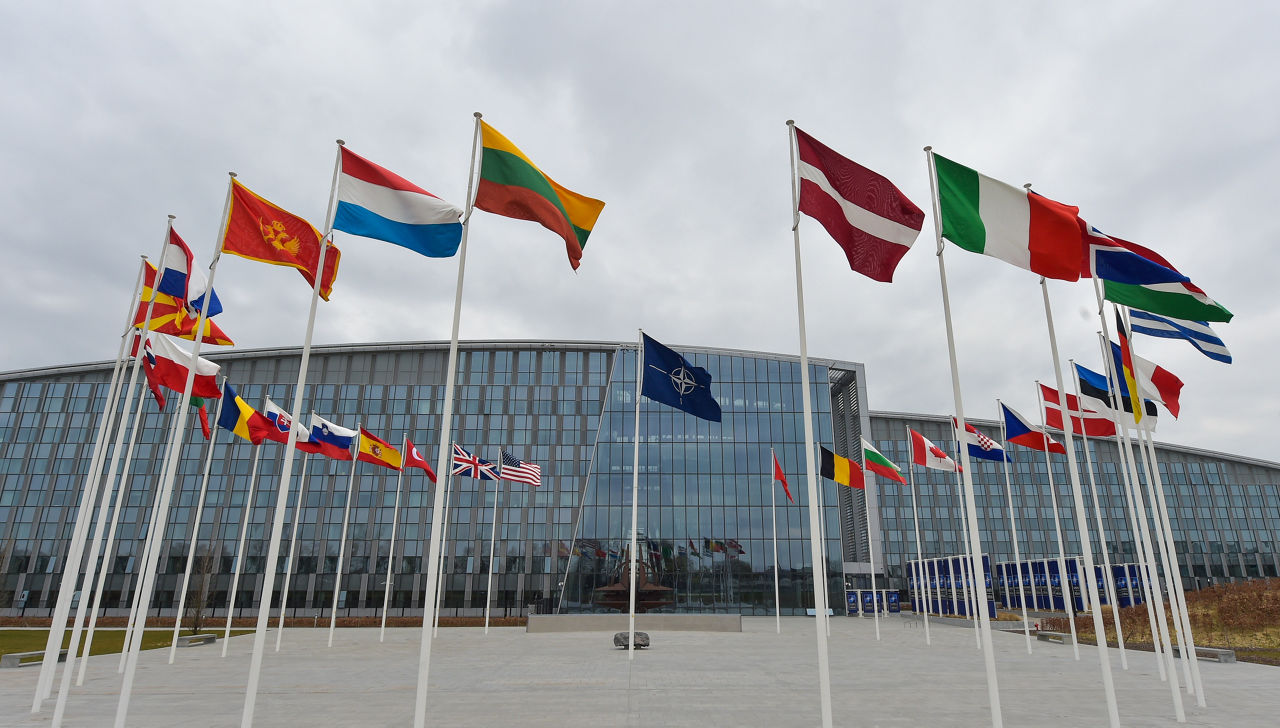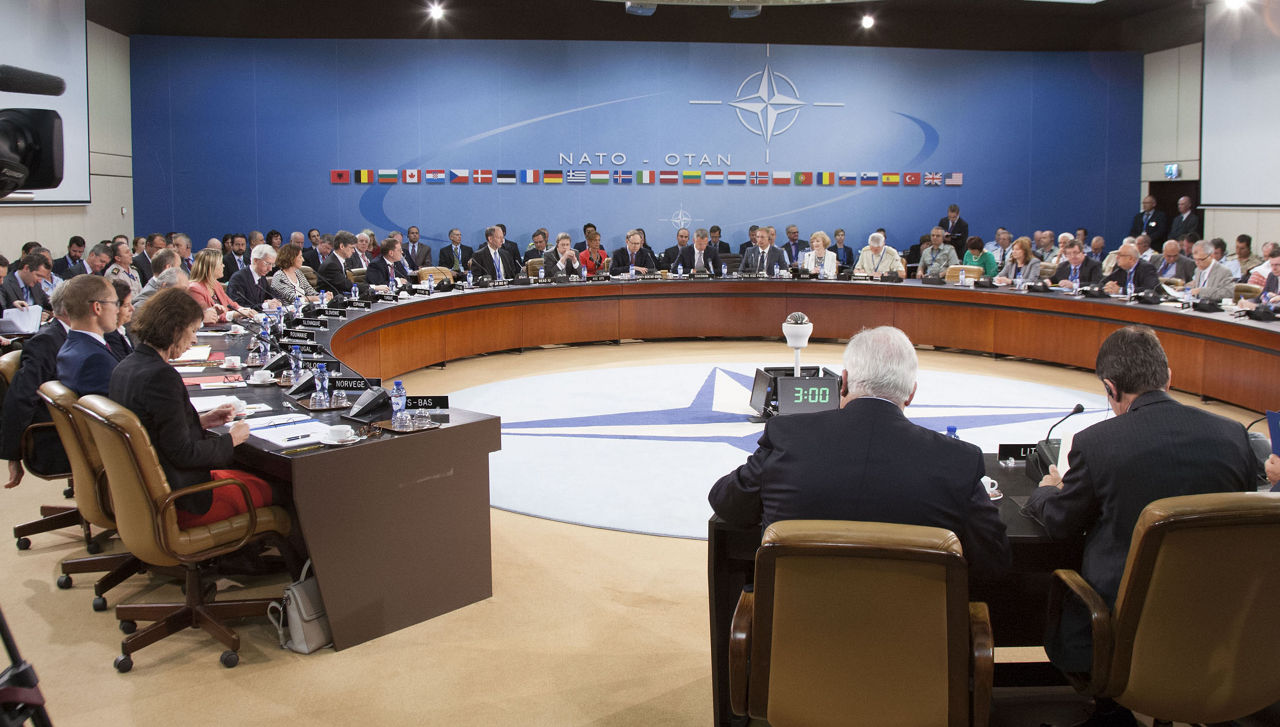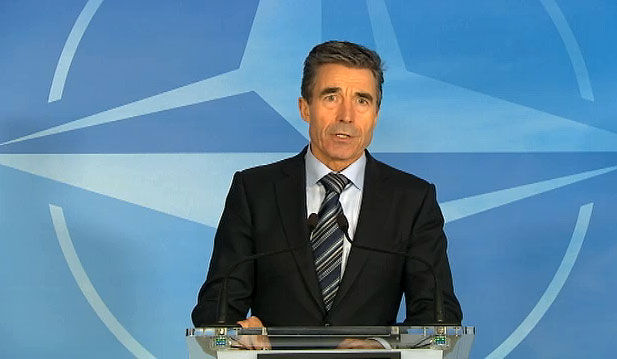Download NATO’s broadcast-quality video content free of charge

Log in
NATO MULTIMEDIA ACCOUNT
Access NATO’s broadcast-quality video content free of charge

Check your inbox and enter verification code
You have successfully created your account
From now on you can download videos from our website
Subscribe to our newsletter
If you would also like to subscribe to the newsletter and receive our latest updates, click on the button below.
Enter the email address you registered with and we will send you a code to reset your password.
Didn't receive a code? Send new Code
The password must be at least 12 characters long, no spaces, include upper/lowercase letters, numbers and symbols.
Your password has been updated
Click the button to return to the page you were on and log in with your new password.
The consultation process and Article 4
Updated: 23 September 2025
All NATO decisions are made by consensus, after discussion and consultation among member countries. Consultation between member states is therefore at the heart of NATO, since Allies are able to exchange views and information, and discuss issues prior to reaching agreement and taking action.
- Consultation is a key part of NATO’s decision-making process, since all decisions are made by consensus.
- It takes place on all subjects of interest to the Alliance, including NATO’s day-to-day business, its core objectives and fundamental role.
- Consultation reinforces NATO’s political dimension by giving members the opportunity to voice opinions and official positions. It also gives NATO an active role in preventive diplomacy by providing the means to help avoid military conflict.
- Under Article 4 of NATO’s founding treaty, members can bring any issue of concern, especially related to the security of a member country, to the table for discussion within the North Atlantic Council.
- Since the Alliance’s creation in 1949, Article 4 has been invoked nine times.
Different forms of consultation
Consultation takes many forms. At its most basic level, it involves simply the exchange of information and opinions. At another level, it covers the communication of actions or decisions that governments have already taken or may be about to take. Finally, it can encompass discussion with the aim of reaching consensus on policies to be adopted or actions to be taken.
Consultation is continuous and takes place both on a formal and informal basis. It can happen quickly, because all member states have permanent delegations at NATO Headquarters in Brussels. Governments can come together at short notice whenever necessary, often with prior knowledge of their respective national points of view or areas of concern, in order to agree on common policies or take action on the basis of consensus. NATO’s network of committees facilitates consultation by enabling government officials, experts and administrators to come together on a daily basis to discuss a broad range of issues.
The principle of consensus decision-making is applied throughout NATO, which means that all “NATO decisions” are the expression of the collective will of all sovereign states that are members of this inter-governmental organisation. While consensus decision-making can help a member country preserve national sovereignty in the area of defence and security, Article 4 can be an invitation for member countries to concede this right to the group or it can simply lead to a request for NATO support.
Article 4
Under Article 4 of NATO’s founding treaty, member countries can bring an issue to the attention of the North Atlantic Council (often simply called “the Council” or “the NAC” – NATO’s principal political decision-making body) and discuss it with Allies. The article states:
“The Parties will consult together whenever, in the opinion of any of them, the territorial integrity, political independence or security of any of the Parties is threatened.”
Any member country can formally invoke Article 4 of the North Atlantic Treaty. As soon as it is invoked, the issue is discussed and can potentially lead to some form of joint decision or action on behalf of the Alliance. Whatever the scenario, fellow members sitting around the Council table are encouraged to react to a situation brought to their attention by a member country.
Since the Alliance’s creation in 1949, Article 4 has been invoked nine times:
- On 10 February 2003, Türkiye formally invoked Article 4, asking for consultations in the NAC on defensive assistance from NATO in the event of a threat to its population or territory resulting from armed conflict in neighbouring Iraq. NATO agreed a package of defensive measures and conducted Operation Display Deterrence from the end of February to early May 2003.
- On 22 June 2012, Türkiye requested a NAC meeting under Article 4 after one of its fighter jets was shot down by Syrian air defence forces.
- On 3 October 2012, Türkiye requested Article 4 NAC consultations when five Turkish civilians were killed by Syrian shells. Following these incidents, on 21 November 2012, Türkiye requested the deployment of Patriot missiles. NATO agreed to this defensive measure to help Türkiye defend its population and territory, and to help de-escalate the crisis along the border.
- On 3 March 2014, Poland invoked Article 4 following increasing tensions in neighbouring Ukraine, as a result of Russia’s aggressive actions.
- On 26 July 2015, Türkiye requested that the NAC convene in view of the seriousness of the situation following terrorist attacks, and to inform Allies of the measures it was taking.
- On 28 February 2020, Türkiye requested consultations following the death of Turkish soldiers in air strikes by the Syrian regime and its backer Russia in Idlib province.
- On 24 February 2022, Bulgaria, Czechia, Estonia, Latvia, Lithuania, Poland, Romania and Slovakia requested to hold consultations under Article 4 following Russia’s full-scale invasion of Ukraine.
- On 10 September 2025, Poland requested to hold consultations in the North Atlantic Council under Article 4 following the violation of Polish airspace by multiple Russian drones.
- On 23 September 2025, the North Atlantic Council met following Estonia’s request for Article 4 consultations after three Russian fighter jets violated Estonian airspace on 19 September 2025.
The political dimension of NATO
Encouraging members of an inter-governmental organisation who have not given up their right of free and independent judgment in international affairs to consult more systematically on an issue is a challenge – be it today or in the 1950s.
In the early 1950s, the NAC recognised NATO’s consultative deficiency on international issues and recommended that measures be taken to improve the process. In April 1954, a resolution on political consultation was adopted:
“... all member governments should bear constantly in mind the desirability of bringing to the attention of the Council information on international political developments whenever they are of concern to other members of the Council or to the Organization as a whole; and (...) the Council in permanent session should from time to time consider what specific subject might be suitable for political consultation at one of its subsequent meetings when its members should be in a position to express the views of their governments on the subject.” (C-M(54)38)
The resolution, which was put forward by Canada and immediately approved, provoked nonetheless a reaction from the American representative:
“Mr. Dulles (United States) supported the Canadian resolution on the understanding that consultation would be limited within the bounds of common sense. Countries like his own with world-wide interests might find it difficult to consult other NATO governments in every case. For a sudden emergency, it was more important to take action than to discuss the emergency. In other words, consultation should be regarded as a means to an end, rather than an end in itself.” (C-R(54)18)
The reservations made by the United States, which no doubt were shared by other member countries, could still be voiced today. Building on this resolution, on 8 March 1956, the then Secretary General of NATO, Lord Ismay, made a statement that widened the debate by explaining the consequences of systemising political consultation within the Alliance:
“A direct method of bringing home to public opinion the importance of the habit of political consultation within NATO may be summed up in the proposition “NATO is a political as well as a military alliance”. The habitual use of this phraseology would be preferable to the current tendency to refer to NATO as a (purely) military alliance. It is also more accurate. To refer to NATO as a political alliance in no sense denies, depreciates or deprecates the fact that the alliance is also military.” (C-M(56)25-1956)
The same year, the “Three Wise Men” produced their report, which inter alia sought to improve consultation within the Alliance on issues of common concern (Report of the Committee of Three on Non-Military Cooperation in NATO). However, ironically, it was published as the Suez crisis emerged. This crisis severely divided the leading founding members of the Organization (France, the United Kingdom and the United States). The Suez crisis acted as a catalyst for NATO, leading it to put into practice something it knew was of vital importance for the unity and solidarity of the Alliance – political consultation.
“Animus in consulendo liber”
When NATO moved to its headquarters at the Porte Dauphine in Paris, in December 1959, the then Secretary General, M. Paul-Henri Spaak, enlisted the help of the Dean of the Council (the longest-serving national ambassador to NATO) in finding a suitable Latin maxim which would capture the spirit of consultation between Allies, to which he attached so much importance. The Dean, Belgian Ambassador André de Staercke, recalled a visit he had made to the Tuscan town of San Gimignano. There, in the Palazzo del Podestà, engraved on the back of the seat reserved for the man who presided over the destinies of the city, he had seen the motto: Animus in consulendo liber.
It seems that an entirely satisfactory translation of the phrase cannot be found, although a French version “l’esprit libre dans la consultation” comes close. Renderings in English have ranged from the cryptic “in discussion a free mind” to the more complex “Man’s mind ranges unrestrained in counsel”.
The motto adorned the conference area at the Porte de Dauphine for several years and, in 1967, was moved to NATO’s home in Brussels, where it graced the wall of the Council room, as it does now in the current headquarters (constructed across the road from the previous headquarters in Brussels).
Setting up a consultation system
As explained above, consultation and consensus were accepted as the basis for all NATO decisions when the Alliance was created in 1949.
However, it was only gradually that NATO set up a consultation system. In broad terms, this was done in three stages:
- 1949-1952: at the signing of the Treaty, NATO introduced the consultation process as a key principle in its working mechanisms. This was reinforced at the Lisbon Conference (1952), where the contours of today’s NATO were put into place: the NAC was made permanent and the position of Secretary General was created, together with an international staff that would support Council decisions on a permanent basis;
- 1952-1956: between 1952 and the publishing of the Committee of Three report on non-military cooperation, attempts had been made to encourage political consultation beyond the geographical limitations defined in the founding treaty, i.e. beyond the defined NATO area.
- From 1956: the principles of the Report of the Committee of Three were further developed and implemented. The Committee recommended measures in the area of political cooperation with regard to foreign policies, the peaceful settlement of inter-member disputes, economic cooperation, scientific and technical cooperation, cultural cooperation and cooperation in the information field.
The Committee of Three left a lasting legacy by encouraging NATO members to reconcile differences within the Organization through productive consultation on matters of common concern, including issues outside the defined NATO area. The Suez crisis provided a first-hand example of why close political consultation and non-military cooperation are necessary.
The fora for political consultation
The principal forum for political consultation is the North Atlantic Council. The NAC is NATO’s principal political decision-making committee. The Secretary General, as the chair of the NAC, plays an essential part in this process. Consultation also takes place on a regular basis in other fora, including NATO committees and working groups. All of these bodies derive their authority from the Council.




